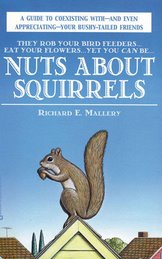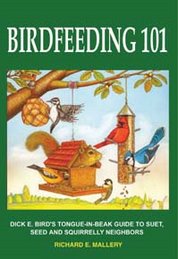
By KENNY KLEIN
IDYLLWILD - The U.S. Forest Service wants residents of the mountain communities to build a nesting box for the flying squirrels in the San Jacinto Wilderness.
While residents may not meet Rocky, who wore an aviator’s cap in the old Rocky and Bullwinkle cartoons, they might be some of the first people to see one in a while.
Forest officials said the squirrels, which are still abundant in the Big Bear, Sierra Nevada and Lake Tahoe areas, may have moved to higher elevations.
Having a flat tail and a flap of skin from its ankle to its wrist, a flying squirrel can glide as far as 75 feet.
The flying squirrel has an extra flap of skin from its ankle to its wrist and a flat tail that helps it glide as far as 75 feet.
"Could people up there see them and not know what they are? Yes!" said Anne Poopatanapong, district wildlife biologist for the San Bernardino National Forest San Jacinto Ranger District. "We often assume, because we do not see things during normal business hours, that they are not there. Maybe, people just don’t notice them."
The small grayish-brown squirrel has not been seen in the San Jacinto Mountains during the recent past, she said.
There was a report of one flying past a motorist near Mountain Center south of Idyllwild.
Another sighting came from a couple driving between Palm Desert and Pinyon Pines. The last report came from a woman driving along Highway 74 toward Hemet.
Forest officials just finished trying to trap a few of the animals in the wilderness near Devil’s Slide and Skunk Cabbage in the Tahquitz Valley about three miles from Humber Park. None were found, Poopatanapong said.
Poopatanapong, who worked with the animals on her master’s thesis, said she thinks the squirrel’s habitat may have gotten drier and the population may have moved to cooler and higher elevations — about 7,000 feet.
The species may also be tough to notice because they are nocturnal, arboreal or tree-living squirrels, she said.
Flying squirrels such as this one are numerous in the Sierra Nevada, Lake Tahoe and Big Bear areas. However, according to a biologist, the small, grayish-brown nocturnal squirrel has not been sighted in the San Jacinto Mountains recently.
Melissa Caughey, executive director for Animal Ambassadors exotic animal sanctuary in the Inland Empire, said she also believes there is a good chance flying squirrels are doing well.
"Anything is possible with the way the climate has been," Caughey said. "Any species when faced with change will adapt and overcome to survive."
Harry Morse, public information officer for the California Department of Fish and Game, said it is a misdemeanor punishable by 6 months in jail and up to a $1,000 fine to capture, keep or sell the animals. Licensed rehabilitation facilities are the exception, he added.
"I put them right up at the top ... they are unique creatures," said Morse, adding there is probably no population count because they are nocturnal and avoid humans.
The flying squirrel’s specialized diet consists of hypogeal fungi (truffles that are underground) but they can also survive on seeds, mushrooms, berries and other foods, Poopatanapong said. Its main predators are owls.
For those who want to help Poopatanapong and her staff, free fliers with simple instructions on how to build a 10-by-7-inch wooden nesting box are available. The access hole must be 1.5 inches in diameter and no paint or stain can be used. The box must also be placed on a backboard and a hinged cleaning hole is suggested.
Other animals that might use the nesting box include tree frogs, hornets and mice, so care should be taken during cleaning.
Jimmy Adams, who said he has hiked between Idyllwild and the Palm Springs Aerial Tramway for years, will keep both eyes peeled and his digital camera ready.
"Wow ... oh my ... my," said Adams, of Valle Vista, as he stopped to buy extra water and other necessities before his hike. "I hope I see one in my lifetime. Unbelievable."











